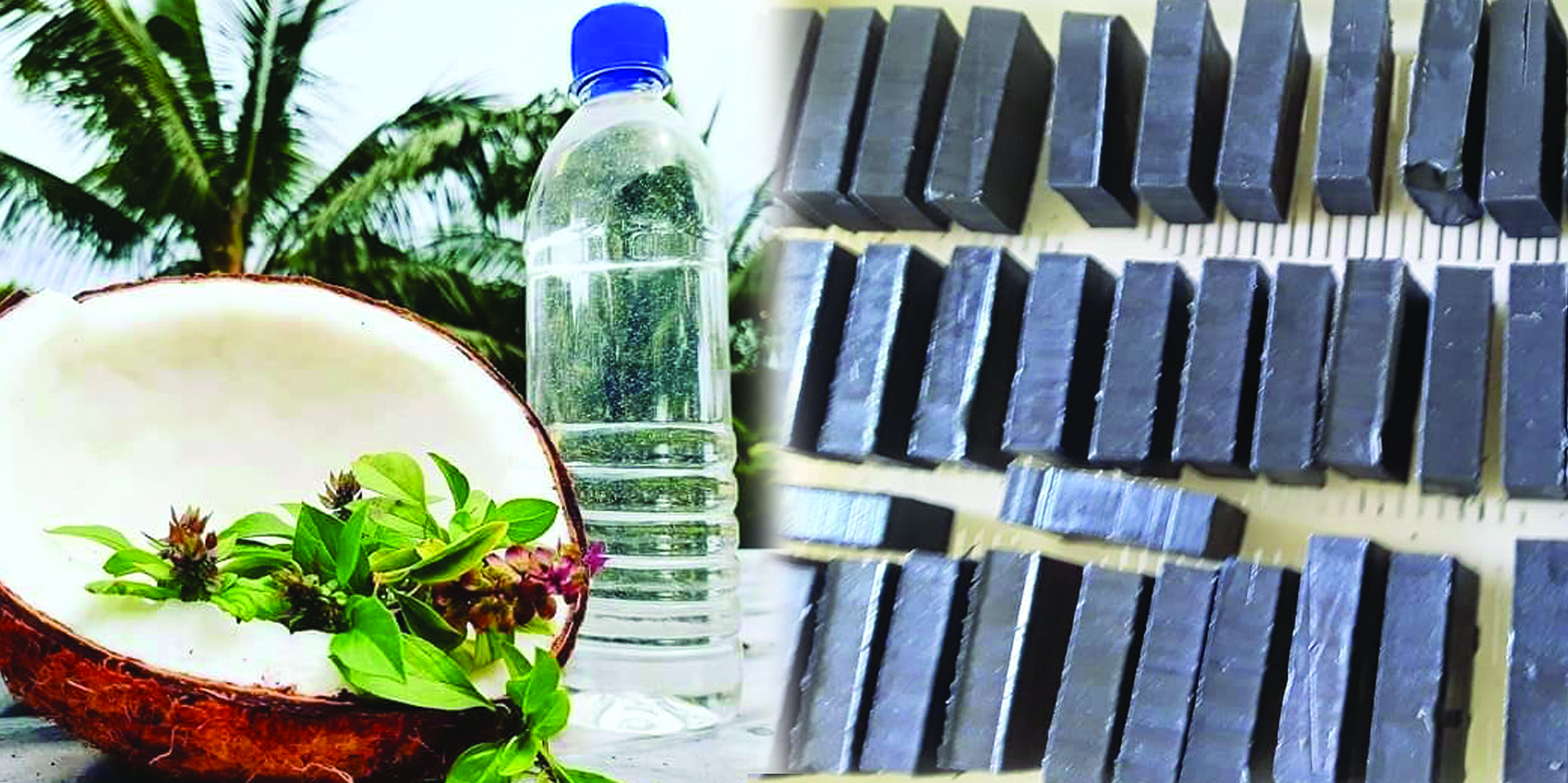b l o g
a p r i l 2 0 2 1

Banana Virgin Coconut Oil Products on the island of Rabi IMAGE: Banaban Virgin Coconut Oil
By Mark Sheehy Co-Author of Value Chain Analysis of VCO for Domestic Markets together with Terikano Takesau Beriki Manager of Banaban VCO
The year 1900 was just beginning when this small indigenous race called the Banabans who had lived peacefully on their tiny central Pacific island suddenly found themselves thrust onto the world stage.
The richest deposits of phosphate of lime had just been discovered by Albert Ellis, a New Zealander working for a London based company.
The forgotten story of the Banabans is a very special tale, one which in today’s society would cause a world outcry and would never have been allowed to happen.
It’s a lesson we should tell our future generations to ensure that these tragic events in history are never repeated. It’s also a wonderful story of courage, determination and hope as the Banabans come back from the very brink of extinction.
The Beginning Of The End
With the discovery of phosphate, Albert Ellis quickly began negotiations with the Banabans to buy or lease land for his company.
The ignorant and trusting Banabans were only too happy too welcome new visitors and not understanding the language placed crosses on lengthy legal documents signing their island away for 50 pounds per annum for the next 999 years.
With the influx of European settlers to this remote outcrop with a total area of only 595 hectares the Banabans soon began to realise that their beloved homeland was disappearing before their very eyes. And so began an era of constant strife and haggling over the Banaban’s disputed land issues or what would eventually be the stepping stones on the path to annihilation.
After years of dissension between the Banabans, the British government and the lucrative phosphate fertilizer industry the Banabans found themselves being forced into so called ‘Agreements’ enacting new British laws that would see the compulsory acquisition of their land.
By 1920 the original British owned Pacific Islands Phosphate Company was sold at great profit to a joint venture consortium made up of the British, Australian and New Zealand governments. This new company was called the British Phosphate Commission.
The Exile From Their Homeland
Immediately after the War in the Pacific was over, the Banabans were gathered up and transported to Rabi Island in the Fiji Group.
Rabi had been purchased for them by the British government from the Banaban’s own Provident Fund.
Rabi is considered a beautiful island with plenty of water, and rich volcanic soil. But the Banabans first beginnings on Rabi were a great struggle. They were originally left on the island in quickly erected army tents, with enough rations to only last the community for two months.
To make matters worse they had arrived on Rabi island in the middle of the cyclone season, and the Banabans began to experience cold and wet weather for the first time. Their homeland was situated right on the Equator and they had never experienced such cold weather before.
The general health of the people was at a very low ebb after surviving years of deprivation in Japanese work camps. Army tents provided no protection against Fiji’s annual cyclone season and they lost many of their aged and young people to pneumonia.
Rabi Island Today
There are 4 villages on Rabi Island, named after their original Banaban villages in the original Gilbert Islands; Tabwewa, Uma, Tabiang and Buakonikai.
There are approximately +3,000 people on the island, with 1,000 people each in the two big villages of Tabwewa and Uma; in the villages they live, they are divided into sectors, Tabwewa has 9 sectors, Uma village has 7 sectors, Tabiang has 8 sectors and Buakonikai has 7 sectors.
The sectors consist of family units that are closely related, who work together to farm, gather food, and cook, living.
The central “town” centre is Nuku which hosts the Rabi Council office, the Government offices for Ministry of Fisheries, Ministry of Agriculture, the Police Station, the Health Centre, the Post Office, The Courts and the Ministry of Lands & Survey.
There is an Executive Director for the Rabi Council who has a Special Administrator who assist in the running and administration of the island of Rabi. There is no land-owning unit for this freehold land. The land is held in trust by the Rabi Council who give allotments to eligible Rabi islanders when they come of age to reside and to farm.
There are pre-schools in all the villagers and 3 primary schools in Tabwewa, Tabiang and Buakonikai, with one high school in Tabiang, there is no banking centre in Rabi, with only the Post Office providing essential cash services with money transfers to and from the mainland via Bank South Pacific Rural Banking Services.
There is no scheduled bus services however private 3 tonne truck operators run regular services the length of the islands to provide essential transport services for the +3,000 people living on Rabi.
The main source of income for Rabian’s is agriculture, with many planting kava as a commercial crop, the island is largely self-sufficient in its food with all families owning and planting for food security.
There is an abundance of coconut trees, many of which have grown naturally over the many years on the islands, the people use coconuts as a food source and make copra or sell to the Banaban VCO Company as an alternative income source.
Our e-Bulletin follows: Virgin Coconut Oil Production on Rabi Island
